With dozens of US military bases encircling China with a “giant noose,” and America’s historic nuclear presence in the Pacific region, a war between the greatest military power and the world’s second largest economy “is no longer unthinkable,” journalist John Pilger says.
In his documentary, The Coming War on China being launched in New Zealand next week, the multi-award winning journalist and filmmaker says he aims “to break the silence”.
Pilger sets out several remarkable historic facts which bear testament to America’s “sabre-rattling” in the Asia-Pacific region.
RNZ Sunday’s Wallace Chapman talks to John Pilger today about his new documentary.
‘Giant US noose’ around China
In the West, “the threat of China is becoming big news, the media is beating the drums of war as the world is being primed to regard China as a new enemy,” the UK-based Australian journalist says.
The mainstream media such as CNN get exclusive access to classified US surveillance flights over disputed islands in the South China Sea, which “have become a flashpoint for war between China and America”.
But “what is not in the news is that China itself is under threat.”
“American bases form a giant noose encircling China with missiles, bombers, warships all the way from Australia through the Pacific to Asia and beyond,” Pilger’s documentary states.
As one of the film’s contributors, author of The China Mirage book, James Bradley put it, “if you were in Beijing and stood on the tallest building and looked out at the Pacific Ocean, you would see American warships, you would see Guam is about to sink because there are so many missiles pointed at China.”
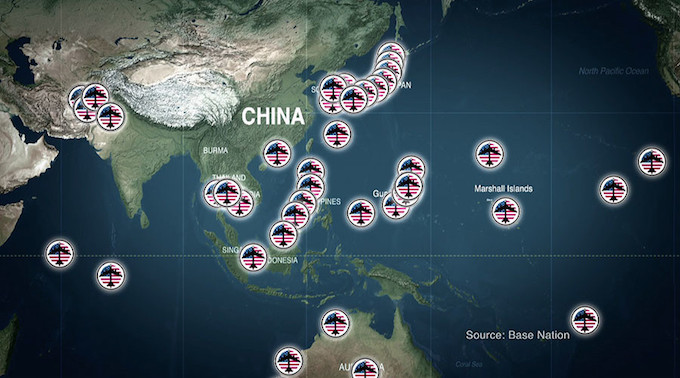
1. ‘The secret of the Bikini Islands’
The site of US atomic bomb testing for many years, which notoriously lent its name to the swimsuit design, the Bikini Atoll within the Marshall Islands is “America’s strategic secret.”
Lying in the vast Pacific Ocean between the US and Asia, the “once bountiful” atoll is a “stepping stone to Asia and China” for the US.
In 1946, the US took over the Marshall Islands as a trust territory, but turned it into a “laboratory for the testing of nuclear weapons, and its people into guinea pigs,” the film says, adding that effects of the atomic bomb were also tested on animals.
While the revealing swimsuit was named after US H-bomb detonations in Bikini Atoll, the bodies of the people on the islands were less celebrated than its wearers. They were among “the most radiated in the world”.
With test sites at sea, in the air, on reefs and underwater, the total yield of the nuclear experiments on and around the Marshall Islands was equal to 7200 Hiroshima bombs, meaning the equivalent of more than one Hiroshima bomb was exploded in the area every day for 12 years, Pilger says.
Bikini Island is till nowadays unfit for human life, he adds.
The area surrounding the crater of one of the greatest man-made explosions, from a hydrogen bomb called Bravo, is “by far the most contaminated place on Earth,” the film cites a US atomic energy official as saying.
“It will be interesting to get a measure of human uptake when people live in a contaminated environment,” the official added, while the film explores the sufferings of the atoll locals, many of whom died of cancer.
“What the Americans did was no accident. They came here and destroyed our land. They came to test the effects of a nuclear bomb on us,” a local woman told the filmmaker.
In a weekend interview on Radio NZ’s Sunday with Wallace Chapman, Pilger also talked about US research on the impact of nuclear radiation on Marshall Islands “guinea pigs”, notably on Rongelap Atoll just 120km from Bikini where the islanders were encouraged to return to live.
In May 1985, the Greenpeace flagship Rainbow Warrior ferried the Rongelap people to a new home on Mejato island on the rim of Kwajalein Atoll just weeks before the vessel was bombed by French secret agents in Auckland Harbour.
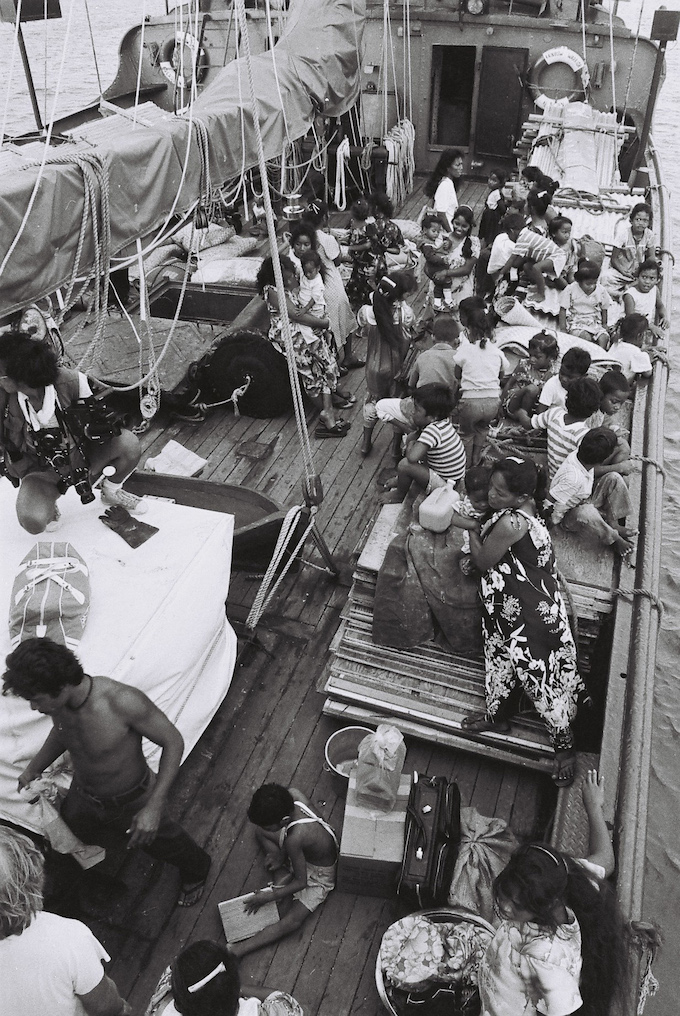
2. ‘Apartheid in the Pacific’
Moving to another American base in the region, cited as “one of its most important and secretive” locations, known as the Ronald Reagan Test Site, the journalist explores the US missile launch pad that, according to him, “commands the Pacific Ocean all the way to Asia and China.”
With weapons of mass destruction being “designed for a coming war,” the base is part of a “remarkable” US Space Command plan known as Vision 2020. Devised in the 1990s, its aim is officially described as “full spectrum” dominance, the film says.
But while Washington spends huge amounts of money on military ambitions, with the US Air Force testing its intercontinental missiles by firing them at the Marshall Islands from California almost 5000 miles away, locals have been subjected to poverty.
America’s treatment of people living across the bay from the US base Kwajalein is called the “Apartheid of the Pacific” by Pilger, and their native island Ebeye “the slum of the Pacific”.
More than 12,000 people, most of whom are refugees from what is now a US missile base, and from islands poisoned by nuclear testing, are brought to work on that very base site to water golf courses for the Americans. After a whole day of work, they are “ferried back to their poverty”.
3. ‘Island people against the greatest military power on Earth’
Japan’s island of Okinawa has become the “frontline of a beckoning war with China,” while the outstanding non-violent resistance of the local people challenges US’ pivot to Asia.
The documentary reveals that in 1962 America’s atomic weapons were almost launched from the island, when a military base there allegedly received an order to prepare an attack on China, but then was abruptly ordered to stop.
One of the American servicemen whose job was to fire Mace cruise missiles told Pilger that China was Washington’s nuclear target during the Cuban missile crisis.
“We must not have the misery of war ever again,” one of the leaders of the protest movement on Okinawa told the journalist, adding that her “duty” as a survivor of World War II is to see the US military bases leave the Japanese island.
READ MORE: Stationing American troops in Japan will lead to bloody tragedy – ex-PM of Japan
Yet, American aircraft are constantly flying low on Okinawa, the film shows, with its author saying that “the threat is a constant presence”.
Teachers often can’t teach because of the noise and the fear, with a memory of a US fighter crashing into Miyamori Elementary School and surrounding houses still vivid for many. Back in 1959, the pilot ejected to safety, but the plane caused carnage, with more than 200 people, mostly children, having been killed and injured in the accident.
“Another tragedy waits to happen on Okinawa, with US military aircraft having been involved in 44 accidents on the island,” Pilger says, while also recalling cases of violence and sexual assault against local women, allegedly committed by American servicemen.
One more outstanding “US war station” is located on the South Korean island of Jeju, where a resistance movement has also been persistent against America’s naval base.
“One of the most provocative military bases in the world” has been built on the world heritage site land, less than 400 miles from Shanghai.
According to the film, it’s aimed at China’s lifelines to the world in oil trade and resources.
There are also numerous secret bases constructed by Washington within a hosting country base to disguise the US presence, with such locations generally not referred to as “bases,” the film claims.
Many have been “set up to combat China’s worldwide economic influence,” while bases on China’s doorstep are “a provocation of war”.
4. ‘Gold mine of drugs’ and Mao ‘paranoia’
Starting from the 19th century, an anti-Chinese “racial stereotype” has been spread across the United States.
According to the film, such a policy concealed a deeper agenda – opium. For the American elite back then China was a “gold mine of drugs”.
Warren Delano, the grandfather of America’s 32nd president Franklin D. Roosevelt, “was the American opium king of China,” author James Bradley says. “Much of the east coast of America – Columbia, Harvard, Yale, Princeton were born from opium money.
“The American industrial revolution was funded by huge pools of money which came from illegal drugs [from] the biggest market in the world – China,” he says, adding that of course it wasn’t talked about, but called it “the China trade.”
Later in the 20th century, a new way to present China as a threat was invented, with Mao’s revolution having ignited paranoia in Washington. With Richard Nixon proclaiming China “the basic cause of all of our trouble in Asia” in 1953, the father of the H-bomb, Edward Teller over a decade later claimed a defence was needed against the eastern power.
“I believe that for the sake of our safety it is necessary to be prepared for the possibility of a Chinese missile attack on the United States,” the film quotes him as saying.
“China … matched America at its own great game of capitalism, and that is unforgivable,” Pilger says.
The journalist uncovers a secret message that was sent by Mao Zedong to Washington five years before the communist revolution of 1949. “China must industrialise right now, this can only be done by free enterprise.
“Chinese and American interests fit together economically and politically. America need not fear that we will not be cooperative – we cannot risk crossing America, we cannot risk any conflict,” Pilger cites Mao’s message as saying.
But the Chinese leader got no reply, and his “reaching hand was tossed away,” as Bradley put it.
5. ‘Smartest weapons need enemies, money is the prize’
The film suggests that a “stereotype of communist dictatorship” is widely spread by the US, preventing from understanding “China as it is”.
“In America you can change political parties but you cannot change the policies. In China you cannot change the party, but you can change policies … China is a vibrant market economy, but it is not a capitalist country,” entrepreneur and social scientist, Eric Li says.
He adds that in China, “capital does not rise above political authority,” and there is no way a group of super rich people can control the politburo, “as billionaires control America’s policy making.”
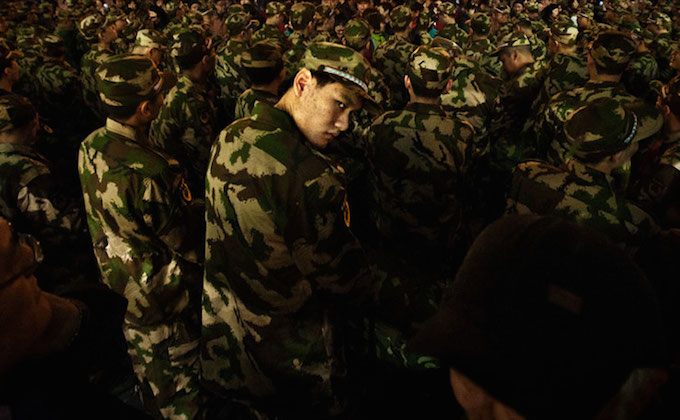
The Chinese government is “not trying to run the world, they are not even trying to run Asia Pacific. I think they want to keep America from dominating [the region], so they have what they believe is their rightful place because of the long history of civilisation,” Li says, adding that Chinese “objectives are really modest compared with their capacity.”
As the world’s economic power moves rapidly towards Asia, the response of the United States is to deploy the majority of its naval forces to the region, according to Pilger.
“This massive military build-up is known in Washington as the ‘pivot to Asia’. The target is China,” he says, also citing president Barack Obama, who in 2011 said that creating an American presence in the Asia Pacific was his “top priority”.
“For America’s unchallenged arms industry, the annual prize is huge profits from almost $600 billion of military spending,” the journalist suggests, adding that “the smartest weapons need enemies”.
- NZ premiere on Thursday, March 30, 6pm at Petone’s Lighthouse Cinema. Q & A with Nicky Hager, Abi King-Jones and Gordon Campbell.
- John Pilger – a looming Pacific war
- ‘A live issue that could change the world, or end the world’ – Review on Rotten Tomatoes
- David Robie’s Eyes of Fire – The Rongelap nuclear story
- US nuclear testing in the Marshall Islands and French testing in Polynesia microsite


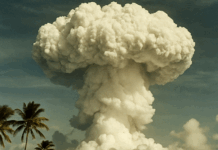
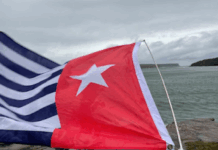
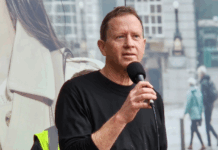
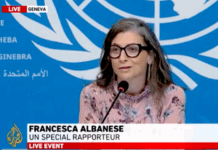













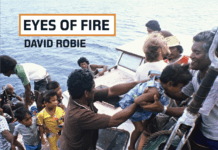








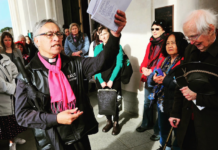

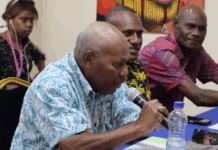














[…] More information and a link to a Radio NZ interview here: https://asiapacificreport.nz/2017/03/26/5-mind-boggling-things-about-pilgers-doco-the-coming-war-on-c… […]
There is now strong evidence using DNA testing on Polynesian chickens that God’s chosen people with the golden tanned skin and broad noses originated in the Philippines. Both our ancient people were tattooed all over and our boats share the same outrigger designs. Seeing the Marshallese people in this documentary brought tears to my ears because it was like seeing my relatives back in the Philippine Islands and I felt their pains of history as we shared the same history of Filipinos being massacred by US soldiers, mass murder in the hundreds of thousands. But this is the thing with history its His Story, the story of Christ redemption the hope of the human race and only through him can history be placed on its rightful path. We feel the same pain here in Australia how the white man re interpreted the rules to take over another civilizations land. In the documentary they call us natives and savages in comparison to what, the standards of barbarians committing genocide, it’s this same white race of Germanic barbarian stock the Angles Saxons that have distorted His Story to give meaning to their domination of the world. Christ said “You can gain the whole world and in the process you will lose your soul. You can only have one master money or Christ.” These barbarians pretend they pursue goodness yet in truth they wanton worship the heathen God of Mammon, wealth and prosperity only for the few and the rest of you can go off and die, that’s OK we have Christ you barbarians can go to hell.
These modern times is a call to arms not with guns but armed with the powers of creativity in the arts changing the perception of the world to the vision of goodness and civility and only then can our future generations be guaranteed the blessed times of peace. WE create because God is a creator, we are made in the image of God because we are his vessels in the creation of life.
Creative Energy is Art
and the swirls of creative inspiration
are his guiding light.
Flames of hope
burns in the midnight hour
unabashed boundless and everlasting.
You are the creation sanctified and made holy by the blood of the cross
Be the light of the world and burn with the eternal flames of hope and love.
But if our love is only of this earth,
And its a love meant only to exist on borrowed times
Is it any wonder we looks towards heavens unconditional love?
Marveling in awe, in its beauty and reverence.
Because truly God’s love is the most beautiful gift
Lasting for all eternity
Beginning with Christ
Is Love.
Comments are closed.